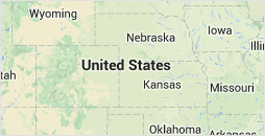Emily Clarke
PHONE NUMBER : -----
Map

3 Ways to Use Python in the Healthcare Industry
Python is a versatile programming language with a wide range of applications. It's heavily utilized as a support language in software development, task automation and data analysis. But the language also proves to be a valuable tool in the healthcare field. Here are a few examples of how.
Image Diagnostics
One of the most exciting ways Python for healthcare changes medical science is through image diagnostics. Medical imaging has come a long way in recent decades, giving practitioners innovative ways to see what's happening inside a patient's body. However, there are still limitations to what humans can take from images.
Physicians and laboratory experts can only analyze so much information at once, and the human factor can lead to diagnostic issues. Some Python-based applications aim to change that. Discover the power of Python for healthcare - Visit this website to learn more!
Revolutionary medical software can now leverage machine learning to analyze images from magnetic resonance imaging (MRI), computerized tomography (CT) and diffusion tensor imaging (DTI) scans. Machines with Python-based software can scan multiple images simultaneously, gathering relevant information to produce more accurate diagnostic outcomes more efficiently than humans.
Health care professionals are using this technology to detect tumors, cardiovascular abnormalities and more.
Disease Prediction
Python is a valuable tool in data science, allowing professionals to make sense of enormous datasets and pull useful insights. Those capabilities are also helping health care professionals predict the risk of disease in humans. Python for healthcare powers software that can analyze genetic information.
Genetic data paired with machine learning can predict disease and establish possible causes. Best of all, machine learning helps software overcome one of the biggest hurdles of disease prediction: Rapid mutation. Applications use machine learning to predict possible mutations, helping health care providers spot risks before they become severe.
Patient and Operations Management
Python also helps manage the day-to-day operations of hospitals and busy healthcare facilities, improving productivity and patient experience. Python-powered applications help patients schedule appointments, request prescription refills and more.
Meanwhile, hospitals are using Python to optimize the use of facilities. The language can help manage appointment scheduling, lab use, treatment center appointments, etc.
Author Resource:-
Emily Clarke writes about business software and services like spreadsheets that automatically generate Python code and transform your data with AI etc. You can find her thoughts at Python finance blog.
